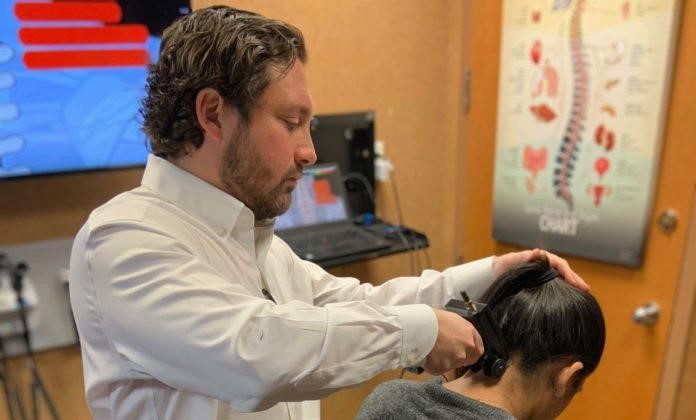
It is important for the recovery community to explore as many alternative treatment options as possible to combat the addiction epidemic that is killing tens of thousands annually. A simple painless spinal adjustment by a chiropractor could be the latest breakthrough in the treatment of drug and alcohol addiction. Dr. Surasky is triple board certified in neurology, addiction medicine, and preventive medicine. He employs early stage detoxification medications, Vivitrol treatment and reduction of stress to the upper spine and limbic brain to treat addiction.
How does the spine relate to addiction?
A good question, but the two are closely related. Dr. Surasky says research and clinical experience indicate the brain’s limbic system becomes “hijacked” by drugs such as opiates and alcohol. “The limbic system is said to be the most powerful driver of human behavior and perpetuates patients’ cravings to keep using these drugs,” Surasky says. “Safe, painless adjustments to the upper cervical spinal bones can help normalize the brain’s limbic system by helping with the overall circulation of cerebrospinal fluid of the brain.” Ok, That makes sense, everything is connected within the body to a certain degree. He went on to add that, “Not only can spinal adjustments reduce the chronic pain issues that may have led patients into drug addiction in the first place, but now we also have evidence that spinal adjustments actually accelerate the healing of the brain from addiction.” A bold statement, but the scientific journals and client success stories support his theory. An official study of patient outcomes is underway.
A study performed back in 2001 in the journal Nature: Molecular Psychiatry, which looked at the impact of spinal manipulations at an inpatient addiction treatment facility in Miami. The findings revealed that chemically dependent patients who received specific spinal adjustments as part of their treatment reported fewer drug cravings and mental health symptoms. One impressive statistic from the study revealed that 100 percent of the study patients who received chiropractic care completed the inpatient program, in contrast about half of those not receiving treatments dropped out prior to completion. Unfortunately no further studies were performed, and the information languished. Armed with this knowledge Dr. Surasky began treating patients with the spinal adjustments at his private practice in Great Neck before bringing the treatment to Bridge Back to Life.
Bridge BacK To Life
Bridge Back to Life, an outpatient addiction treatment program, has teamed up with New York Chiropractic College (NYCC) in upstate Seneca Falls to offer the latest breakthrough therapy for substance use disorder. The first-of-a kind partnership, the brainchild of Bridge Back to Life’s medical director Dr. Russell Surasky, brings doctors from NYCC to evaluate and treat the center’s patients undergoing addiction therapy. This agreement with the college will serve as a national model for drug rehabilitation centers throughout the country.
What Does The Treatment Entail?
Several diagnostic tests are performed at the base of the brainstem to determine if a misalignment exists. If present, the practitioners are taught to incorporate gentle painless, corrective spinal adjustments into the patient’s care plan. This treatment reduces stress on the spinal column and limbic system of the brain.
Client Case Study
Mary W. came to Surasky’s Great Neck office for help with alcohol addiction nearly one year ago. She received monthly Vivitrol shots and had marked success in curbing her cravings and drastically reduced her drinking. But Mary still had one-day “slips” from time to time. She complained of insomnia and migraine headaches. She recalled an accident in the past, where she hit her head, the damage may have never been properly assessed.
Dr. Surasky took X-rays of her upper neck and performed a Tytron scan. He said the digital images showed she had misalignments at the C1 vertebral level, likely putting pressure on the lower brainstem area. In addition to Vivitrol shots, Mary started receiving upper cervical adjustments and has remained sober since. Her migraines have dropped from five per month to one or none and she is sleeping better.
In closing this is something relatively simple, inexpensive and yields drastic results. The efficacy of the treatment is yet to be official; however, for the interim this seems like a viable addition in the war on addiction.

